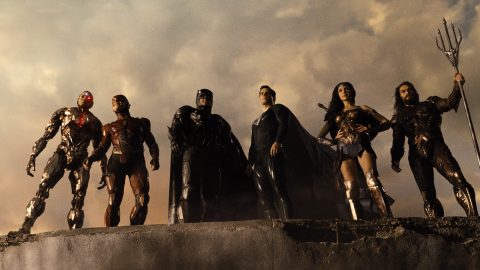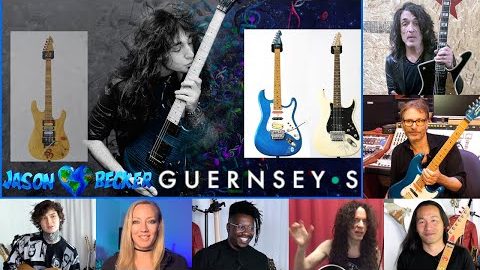
full capacity live shows only returned to the UK on July 19 – but, remarkably, artists have somehow managed to cram what feels like a year’s worth of jubilation into just five-and-a-bit months. From the spell-binding shows put on in the capital by LA newcomers Gabriels last month to long-overdue victory laps for 2020 albums from Charli XCX, Biffy Clyro and Fontaines D.C it’s certainly felt like musicians were hungry to put on the best shows possible after so much time away from the stage, with some grafting away for weeks to put on the kind of pyro-filled, choreo-crammed spectaculars to celebrate their long-awaited return.
Going back to shows has often felt very emotional this year. Rather than just putting on a gig, there’s been a real sense of the year’s stand-out artists welcoming their fans along on the strange old journey of returning together. “We were starved of live music for so long,” says singer-songwriter Self Esteem’s go-to choreographer Stuart Rogers says of lockdown. “I live my life in the dance studio, and suddenly I wasn’t there, for the first time in 35 years. My whole life vanished, and it was tough. Once we got back in, it was all guns blazing – we just thought, let’s make it amazing.”
“Doing live gigs again doesn’t even feel real, because for so long we were completely deprived,” adds Chester Lockhart, creative director of genre-shedding pop don Rina Sawayama’s recent Dynasty Tour. “It felt completely surreal.”
When NME headed to Rina’s opening night at Manchester’s 2000-capacity Albert Hall last month, we felt simultaneously dazzled and moved by the stadium-baiting ambition of a live show which was also peppered with thoughtful details – and awarded it five stars in our review. “The meticulous choreography and altered arrangements of her songs result in a dazzling, all-encompassing pop assault on the senses, the sort that usually takes place on far larger stages than these,” wrote NME’s Hannah Mylrea.
Though the blaring production, slick costume changes and multi-levelled stage set-up felt like watching a top-tier pop artist headline an arena, the more personal touches bridged the gap between Rina and the room. Sprawling across the floor armed with a plastic saxophone, she quipped: “For the whole of 2020 I was basically in this position –horizontal.”
Delve deeper into the staging, and certain visuals call out to various personal influences, from a nod to Sawayama’s favourite game, Final Fantasy, to the Neon Genesis Evangelion anime series, while the show also featured an interpolation of Japanese singer Mariya Takeuchi’s pop banger ‘Plastic Love’. “In everything we do, Rina’s experiences of being othered as an East Asian person and growing up in a Western country… we want to bring elements of that heritage as a queer person and a Japanese person living in the UK,” Lockhart explains.
Creating an arena-ready show while removing that gulf of separation was a main goal, her collaborator Lockhart explains today: “Rina and I have a really big love for the huge pop shows of the late ‘90s and early ‘00s. Her music references a lot of Britney, Christina, Beyoncé, Destiny’s Child… and something that really happened in the nineties was around scale. Everything felt really big, and we wanted that same strong sense of showmanship and being an entertainer to come through.”
In structuring the show, they broke it down into three theatrical acts. “It begins with all these heavy rock numbers and flames and darkness; the opener is Hell,” Lockhart says. “The middle is the Garden of Eden with the Y2K pop stuff, and then the end is called Redemption. That’s Rina’s coming-of-age moment.
“The number one goal of the show was to involve people. It’s not just something you’re viewing; it’s something that you’re part of. Rina’s also gone through those two years of really stark separation and isolation. We both wanted it to be a moment where it felt like there was togetherness and community.”
Beyond never taking live shows for granted, has Lockhart learned anything? For one, they’re now really slick at pulling off lightning-speed costume changes in the cramped backstage corridors of venues like London Roundhouse, Manchester’s Albert Hall and Leeds’ Beckett student union.
Lockhart adds: “So many of the venues have these small tiny corridors, and I’ll be there waiting with a head-lamp on my head. When [Sawayama] runs back, I’ll put this face covering on so her make-up doesn’t get smudged, and I’ll change whatever needs changing on the bottom while her tour manager changes the top portion. Her hair stylist is there, too, holding her hair up to make sure it stays good. We have to move the mic pack, the in-ear monitors, do a make-up touch up… it all happens in about a minute and a half and if one element goes wrong – the pants rip or whatever – there’s no room for error. But the stress is fun. It’s like changing a tyre at Formula One.”

Stuart Rogers shares this sense of a need for connection. After performing in the West End for years, Rogers began working with Self Esteem – aka Rebecca Lucy Taylor – as she launched her solo career four years ago. When it came to bringing her joyous second album ‘Prioritise Pleasure’ to the stage, Rogers and Taylor knew they needed to feed off the pure euphoria of being back together again under the same roof.
“We were calling this tour ‘Self Esteem 2.0’,” Rogers says. “We’d been sitting on this amazing music for over a year before it went out on tour, so we were so buzzing to get going with it.”
Much of the audience seems to feel the same – I know I do. After a fairly desolate year for live music involving a handful of livestreams, one slightly sad seated club night, and a busker in my local park playing an onslaught of Jason Mraz covers, I’ll admit I had a bit of a low-key sob when I watched Self Esteem and her troupe of leopard-clad dancers performing in 1,000-capacity London venue Heaven – another live show that got the full five-star treatment from NME.
Certain moments from the artist’s second album ‘Prioritise Pleasure’ – like the anonymous woman on opener ‘I’m Fine’ who speaks of barking like a dog to deter men’s harassment – transformed into powerful communal moments, as the entire venue howled along with Self Esteem. While many choreographed live shows centre around untouchability, with its star at the centre on a glimmering pedestal, Taylor and her backing singers danced as a unit. Their energy felt so infectious that you wanted to hop up on stage yourself and join in.
“We really wanted to make something that would connect” – Self Esteem’s choreographer Stuart Rogers
Though Madonna’s iconic and game-changing 1990 Blond Ambition tour was one clear reference-point, Rogers mostly tried to be guided by ‘Prioritise Pleasure’: ”Blond Ambition was in the back of my mind, but other than that… I wouldn’t say I was influenced by anything other than the music, really. The songs stand alone, and they’re fantastic enough that they don’t need the dancing, but once you add in this physical layer, the audience really connects with that. The physicality of the movements accentuates the feeling… It’s almost like the feeling of a chosen family when they’re performing and sweating together.
“We’re trying to do arena-type performances in smaller venues in the hope we’ll get to those bigger ones, but sometimes those big productions can feel like they’re all about worshipping the artist. Our show should hopefully feel like a coming-together of like minded people singing together, living the same moment. at the same time. We really wanted to make something that would connect, and doesn’t feel elitist.”
Though Taylor and her team grafted away for days in their Margate rehearsal studio to perfect the act, Rogers wanted the choreography to feel natural and communal. “When you watch it, you should feel like, ‘I could do that,” he says.
For new-gen pop-punk Yungblud’s (aka Dominic Harrison) production designer Lewis James, the artist’s Life on Mars tour similarly felt like the perfect way to head back into the chaos of live shows, artist and audience side by side. “These shows were really about a sense of community,” James says. “It was the first time back to a live show for many [people] who went, and it was the first time Dom had performed to a live audience in a long time. The energy was really apparent from the start, and we tried to encapsulate that into a strong visual image on stage.”
“In the digital age, it’s exciting to expand on the idea of what a show is considered to be” – Yungblud’s production designer Lewis James
Reviewing Yungblud’s show at London’s 10,000-capacity Alexandra Palace in October, NME’s Ali Shutler felt a similar sense of belonging in the room. “Despite the scale of tonight, it still feels intimate,” he wrote. “There’s a ramp jutting into the audience meaning those that have spent two days camping outside the venue are as close to Harrison as possible. Even the people loitering at the back of the cavernous room can’t help but clamber onto shoulders and scream along with every word. Harrison is also the same empathetic ringleader he’s always been, inciting chaos and ensuring community.”
In order to break down the walls between performer and audience, James and his team designed a range of giant red blimp balloons to hang around outside each venue, dishing out red stickers to punters as they came inside. “We wanted a way to communicate the connections between fans: this idea of love and unity that was present in much of the show’s visual messages,” he says. “When placed over the audiences’ flash on their phones [the red stickers] created a sea of red lights connecting the fans and Dom.”
The stickers also created a distinctive filter, meaning that crowd photos are, James hopes, immediately recognisable as snaps from the Yungblud tour. “In the digital age, it’s exciting to expand on the idea of what a show is considered to be in a physical sense,” he says, as if “spending time designing a concept that can extend beyond the tangible stage or a show’s time and place.”
In crafting the look of the show, “a large reference for Dom was The Rocky Horror Picture Show,” he explains. “It was important also to have an essence of DIY attitude to the shows, deliberately creating imperfections and not making it feel too polished, but raw and organic.”

Tying into the scrappy nature of the countless gigs Yungblud played before the enormous Ally Pally, the staging revolved around gigantic stacks of Marshall amps and the singer’s name duct-taped onto a drum. While you’d think that the giddying amount of pyro on offer might’ve presented a challenge, James insists that installing rows of towering flamethrowers is “actually not too complex, adding: “It’s almost like picking ingredients for a cake. In this case, maybe one that’s spent slightly too long in the oven?”
After over a year away from the stage, James is just happy to be back out there. “I think there’s so much excitement in the entire industry that productions can continue, and so many different people’s thoughts, energy and hard work go into producing performances,” he concludes. “It’s a great feeling seeing everything begin to grow again.”
The post “We wanted togetherness and community”: how gigs came back with a bang in 2021 appeared first on NME.




